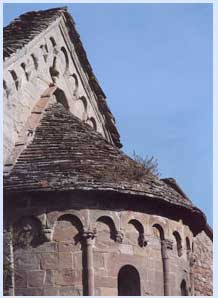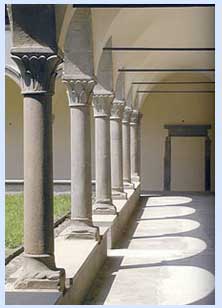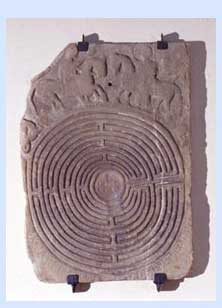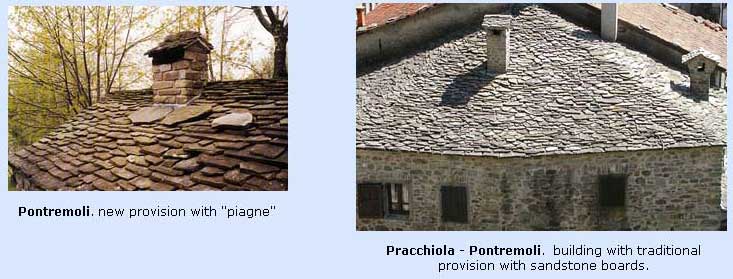Centuries of history of Lunigiana are witnessed in the stones
 |
| Pontremoli. Romanic Abside of S. Giorgio Church |
| The beauty of the natural materials can be witnessed on religious monuments, and other witness are the skillfully decorated Baptist basins, altars and tabernacles, all made from sandstone. |
 |
 |
|
| Pontremoli. Monastery of the S.S. Annunziata columns of the 1.side aisle |
The Labirinto |

During the medieval times, in Lunigiana and also in other areas, houses were covered with straw or wood, made them vulnerable to fire. The use of slabs indicate ancient intelligence that benefited the community as it gave their homes better protection.
Ancient testimonies go back to the VIII century, telling the story of Ponzanello, home to the Bishop of Luni for the community of Fosdinovo. Three loads of slabs were distributed to every inhabitant of the community to put on their houses, with the order to be maintained by the inhabitants. Over the centuries, that tradition was followed by other villages in the region.



